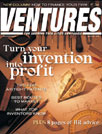
 |
by Liz Brissett
When it comes to venture capitalist pitches, keep it simple.
That’s the advice of both venture capitalists and successful entrepreneurs when it comes to those 20-minute pitches that determine whether or not a company gets funded.
In other words, don’t use the latest flaming, flying, spinning logo in your presentation. In fact, the recommendation is to stick with good ol’ PowerPoint (PowerPoint 2000 sells for around $109 for an upgrade or around $339 for the entire program).
But then again, if a company’s founder or CEO doesn’t impress a venture capitalist, the best elevator pitch probably won’t make a difference.
“We look at the founder, the CEO and the plan rather than how cool their presentation might be,” says Steve Pederson, partner with Sherpa Partners in Minneapolis, a venture capital firm. He adds that the focus of the 20 minutes a company is presenting should be on the founder or CEO rather than the presentation itself.
In many presentations, the venture capitalist’s decision comes down to the sales skills of the entrepreneur.
“When you’re an entrepreneur, you’d better be the best salesman in your company,” says Pederson. “If you have to hire that out, you’re in trouble. Because people invest in a CEO.”
Cut the extras
Pederson recommends keeping presentations as simple as possible, both graphically and with
the words or bullet points that appear on your slides.
“People get enamored with technology, and they write books that we don’t want to read!” says Pederson.
Don’t read straight from your PowerPoint slides, funders say. It gets boring and allows your audience to know what you’re going to say before you’ve said it. After the audience is done reading the slide on the screen, they tune out. Instead, let the slides be a guide for the highlights of the speech.
Another no-no is giving the audience printouts of the presentation. That’s a sure way to have them flipping through pages while you’re trying to present.
But there’s another reason to avoid handouts, says David Gigerich, CEO of Minneapolis-based Zonetrader.com: You never know to whom the venture capitalists might be passing your strategic information. Gigerich and Zonetrader raised $48 million in venture capital this spring.
In order to protect the company’s idea, avoid including information in the presentation that competitors shouldn’t see. If one venture capital firm doesn’t decide to fund your company, they may decide to fund a competitor and pass along the handouts you so conveniently provided.
Gigerich suggests mailing handouts to venture capitalists if they request it. That way if your company doesn’t get funding, there’s no sensitive information left in the hands of outsiders.
“You can never get them to sign confidentiality agreements, so everything you give them you have to assume your competition will see,” says Gigerich.
Although Zonetrader stuck to the simple PowerPoint format in the end, the company’s first draft of the presentation was a bit more ambitious.
“We had a more graphical sort of spinning logo. We had a pretty dramatic kind of opening, and we got rid of it right away,” because execs knew it was distracting from the substance of the presentation, says Gigerich.
Venture capitalists “don’t want to be distracted by any new buzzing flying features — the flaming whatever,” he adds. “In the end our presentation was a pretty basic PowerPoint presentation with few graphics but no new flaming things.”
Elevator pitch
Although elevator pitches are far from high-tech, without them, the best PowerPoint
presentation in the world will never be seen by venture capitalists. A good 30-second
elevator pitch is vital to an entrepreneur’s success, says Pederson. It’s the
elevator pitch that gets a company the chance to make its longer presentation. So without
a good elevator pitch, don’t waste the money on PowerPoint.
Of course, the elevator pitch should include the elements of who you are, what market you’re in, the size of the opportunity and why you will be successful.
Having a strong elevator pitch isn’t all that common, says Pederson, who works closely with companies to help make them fundable. He says most entrepreneurs can’t communicate the essentials in a 30-second elevator ride.
Many entrepreneurs use technology to make their presentations stand out. But using a consistent look for your presentation will accomplish the same thing. Pederson adds that it is important to have a visual identity for your company. Having a logo and using it in your presentation and on company letterhead makes a good impression and helps the venture capitalists remember who you are and what you’re about, especially in follow-up correspondence.
And a final word of warning from Pederson to those who still insist on reading the details of their presentation right off the screen, or including graphic features that take three minutes to load while the audience sits and waits:
“You may be right, but you can go to hell being right.”
David Gigerich, Zonetrader.com
612-512-3206; david.gigerich@zonetrader.com
www.zonetrader.com
Steve Pederson, Sherpa Partners
952-942-1070; steve@sherpapartners.com
www.sherpapartners.com